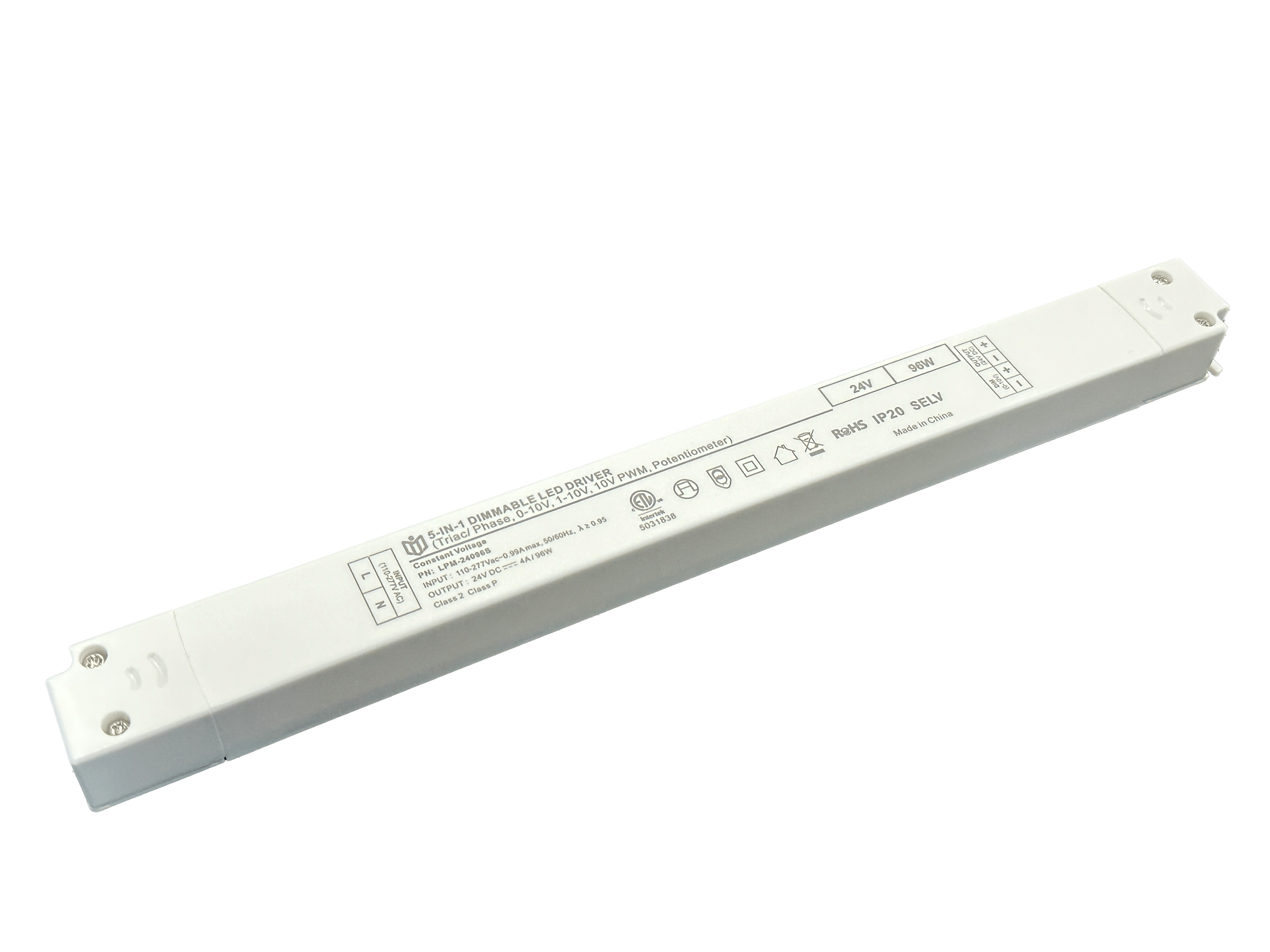From Monochrome to Multicolor: TRIAC Dimming Power Supplies Spark a Lighting Aesthetics Revolution
Breaking Free from Single-Hued Limitation
For decades, traditional lighting systems trapped designers in a world of monochrome uniformity. Fixtures either blazed at full brightness or shut off entirely—like flipping between day and night without twilight. This binary approach severely constrained creative expression. Architects couldn’t emphasize texture; retailers failed to highlight products dynamically; artists lost nuanced shading tools. The market cried for technology that could bridge these extremes with smooth transitions. Enter stage left: the unsung hero changing everything—TRIAC (Triode for Alternating Current) dimmers paired with advanced power supplies. Unlike crude resistive methods that wasted energy as heat, these silicon-based controllers chop AC waveforms precisely, enabling variable voltage output while maintaining efficiency.
Decoding the Magic of Phase Control Technology
At its core, a TRIAC dimmer acts as an electronic switch operating on phase angle principles. By delaying the trigger point within each AC cycle, it effectively reduces average power delivery to compatible LED drivers or ballasts. Modern units achieve sub-millisecond response times, allowing imperceptible adjustments across thousands of steps from 0–100% luminosity. Crucially, they preserve color rendering index (CRI) values above 90 even at low settings—something linear transformers never managed. When integrated with programmable drivers supporting RGB/W channels, suddenly galleries showcase Van Gogh’s starry nights through addressable LED arrays; hotels layer warm ambient glow over cool task lighting; greenhouses optimize spectrum composition for plant growth cycles. It’s not just dimming anymore—it’s spectral choreography.
Painting With Light: The Multicolor Palette Unleashed
Where once designers mixed filters physically to alter hues, now digital commands shape light itself. Take commercial refrigeration displays: instead of sterile white floodlights washing out produce freshness, dynamic tuning makes strawberries pop crimson against emerald leaves under naturalized dawn simulation. Museum exhibits go further still—Rembrandt portraits gain new depth when surrounded by period-accurate amber washes fading into indigo shadows. Even residential kitchens become canvases; countertop lights shift from baking bread warmth (2700K) to meal prep clarity (5000K), all controlled via smartphone apps syncing with circadian rhythms. And because quality TRIAC systems eliminate audible buzzing common in cheaper alternatives, silence lets beauty speak unimpeded.
Smart Ecosystems Fueling Holistic Design Philosophies

Today’s best implementations transcend standalone gadgetry. They nest within IoT frameworks where occupancy sensors activate pathways only when walked upon; daylight harvesters dim window shades proportionally to outdoor intensity; voice assistants orchestrate entire room moods based on user profiles stored locally (privacy intact!). Hospitality sectors leverage this hardest—hotel lobbies transition automatically between welcoming golden hours, focus-driven noon conference modes, and winddown blues after midnight. Crucially, universal compatibility protocols like DALI or DMX512 ensure legacy fixtures upgrade path exists alongside cutting-edge installations. No more ripping out perfectly good hardware every five years thanks to closed ecosystems.
Case Studies: Before & After Reality Check
Consider Milan’s Galleria Vittorio Emanuele II restoration project. Engineers retrofitted historic glass ceilings with waterproof TRIAC-driven LED panels mimicking original gaslamp flicker patterns but consuming 82% less energy. Or Singapore’s Changi Airport Terminal 4 baggage claim area—once a soulless fluorescent box now pulses with tropical sunset gradients updating hourly per flight departure destinations. Closer home, Portland cafe “Bean There” saw coffee sales jump 17% after installing mood-matching brew station backlighting synced to pour-over timers via their existing Wi-Fi network. Each example proves aesthetic enhancement directly correlates with operational metrics when executed thoughtfully.
Future Horizons: Where Could This Lead?
Imagine stadiums whose stands change team colors mid-game without manual intervention; hospitals using biometric feedback to calm patients through chromatherapy; fashion shows broadcasting runway looks globally with zero latency color standardization across continents. As GaN FET semiconductor costs plummet and AI algorithms get smarter about predictive user preferences, we’re merely scratching surface potential. One thing remains certain though—the era of static illumination belongs in museum archives beside coal lamps and incandescent bulbs. The revolution? It’s already here—and powered by intelligently managed electrons dancing the waveform tango.
 In heritage architecture prote
In heritage architecture prote
 When small-batch customization
When small-batch customization
 Have the electromagnetic emiss
Have the electromagnetic emiss
 When Triac dimmable power supp
When Triac dimmable power supp
